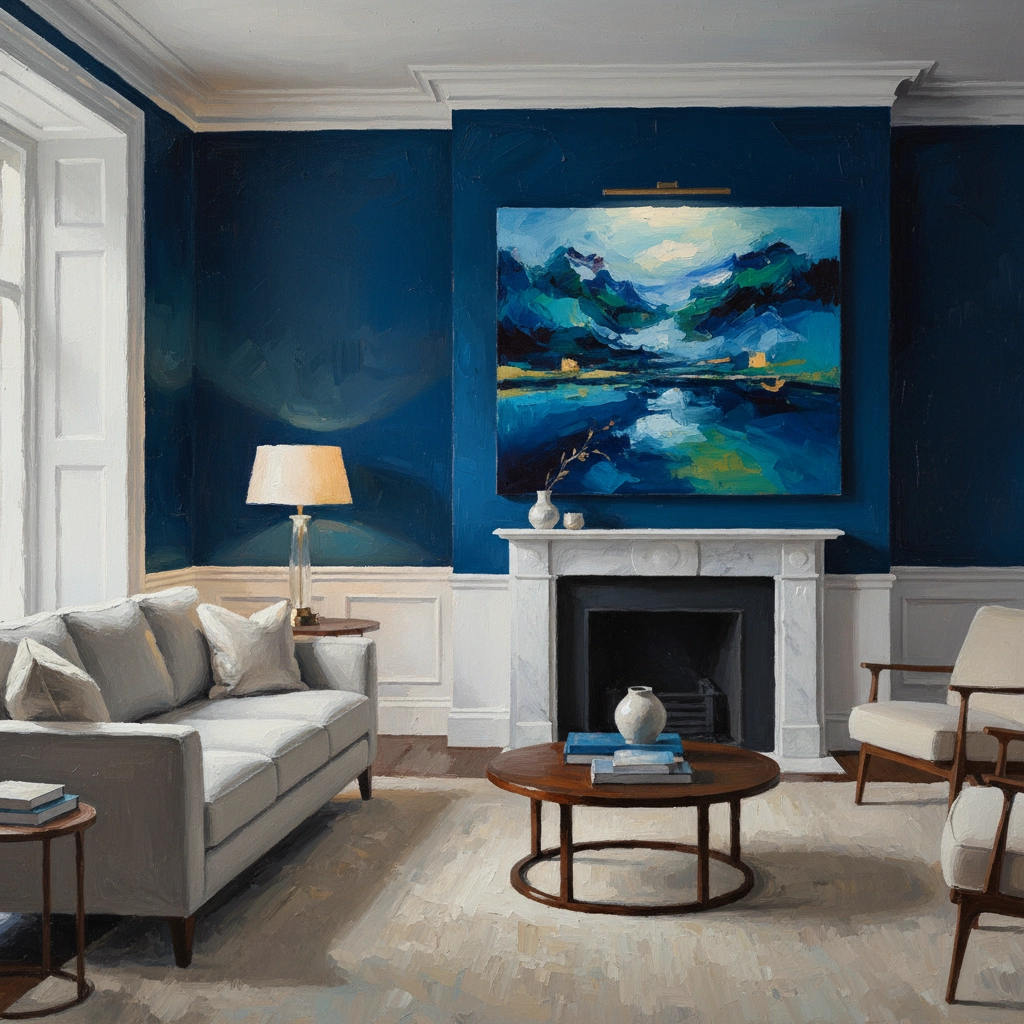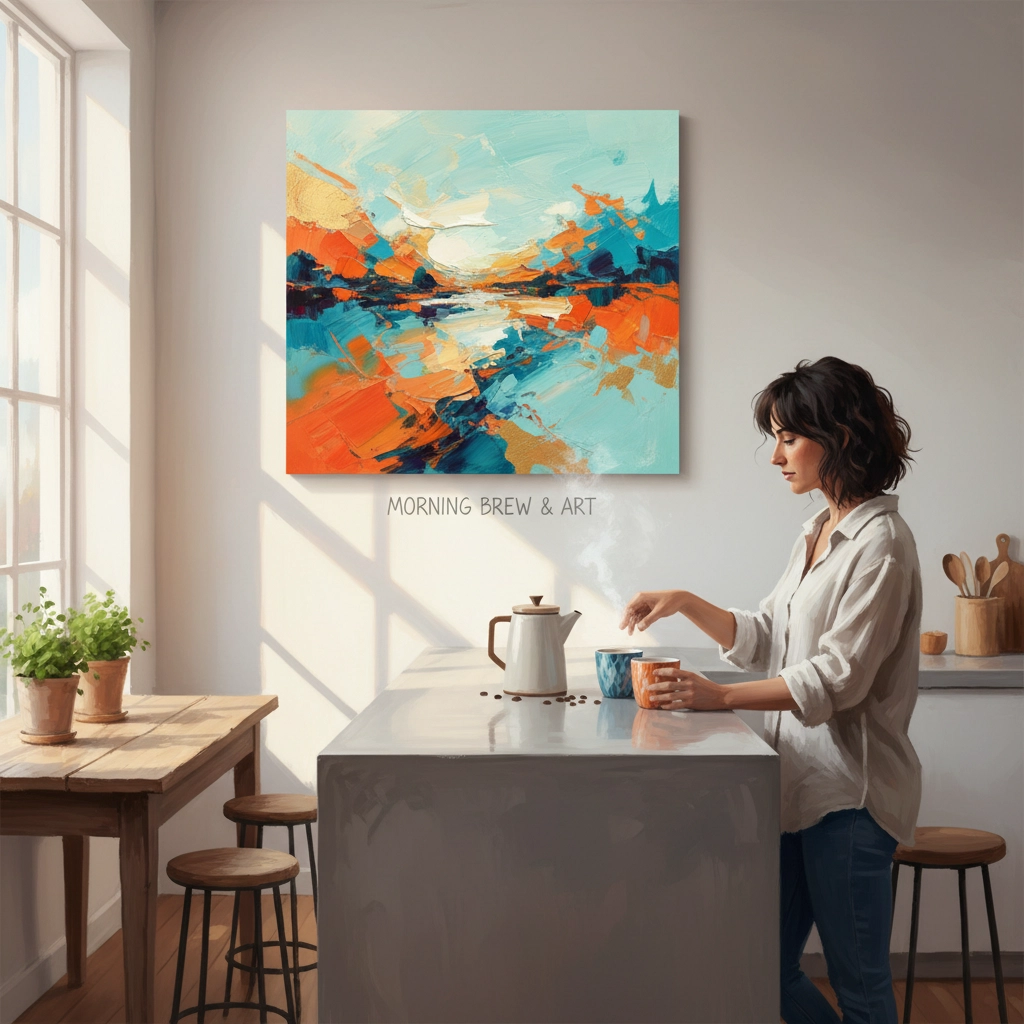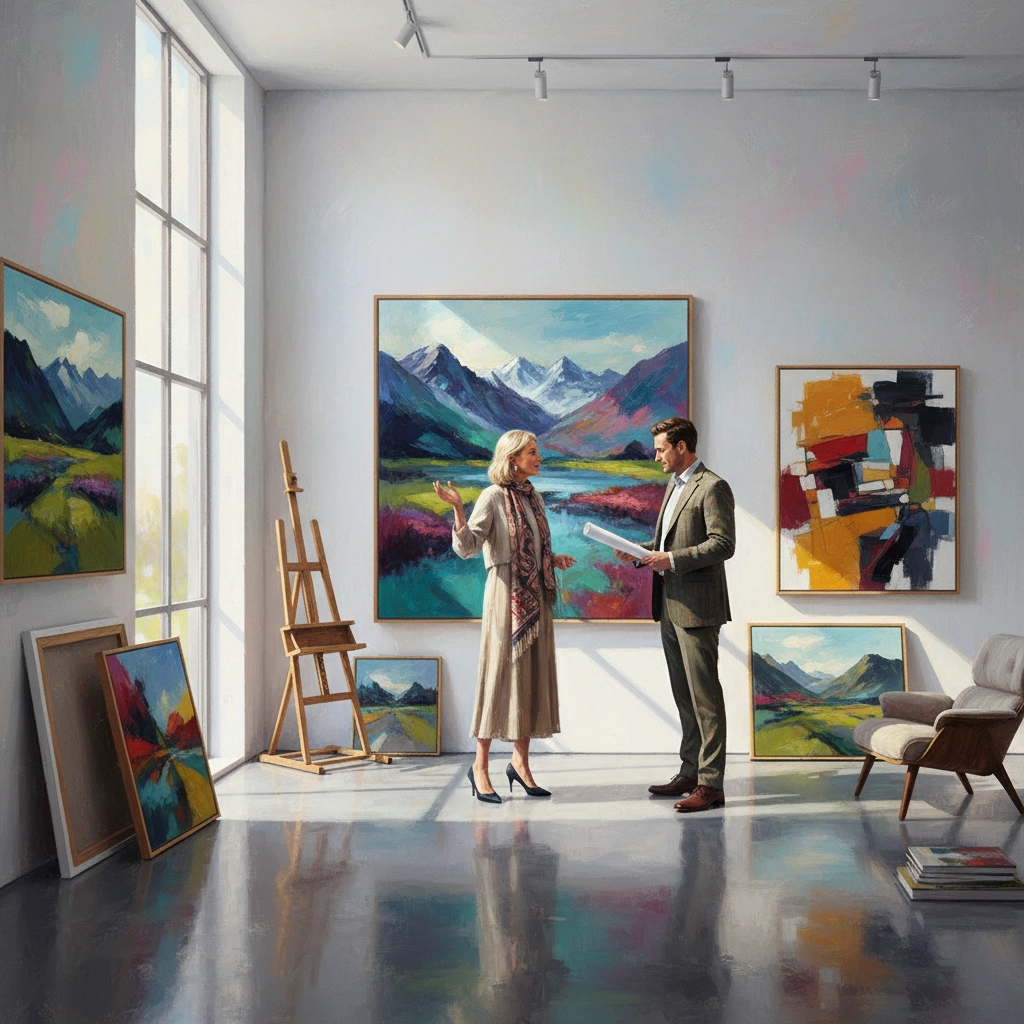
1. Creating Dramatic Color Backdrops That Make Art Pop
Aberdeen designers have mastered the art of using bold, rich wall colors to showcase contemporary Scottish artworks. Rather than defaulting to neutral whites and beiges, they're embracing deep blues, forest greens, and warm charcoals as backdrop colors that make Scottish contemporary pieces absolutely sing.
This approach works particularly well in Aberdeen's period properties, where original architectural details like cornicing and plasterwork provide natural framing for dramatic color choices. The key is selecting colors that complement rather than compete with the artwork. For instance, a deep navy wall can make the blues in a Scottish seascape painting appear more luminous, while a rich burgundy backdrop enhances the warm tones often found in contemporary Scottish landscapes.
The technique requires confidence, but the payoff is substantial. Rooms that might have felt bland or generic suddenly possess character and sophistication that reflects both the homeowner's personality and the vibrancy of Scotland's contemporary art scene.
2. Integrating Art as Functional Daily Elements
Contemporary Scottish art shouldn't live in isolation: it should be part of daily life. Aberdeen's most successful interior transformations involve weaving artwork into the functional aspects of living spaces rather than treating pieces as afterthoughts to be admired from a distance.
This might mean selecting a vibrant contemporary Scottish piece for the kitchen that can be appreciated during morning coffee rituals, or choosing works for hallways that create visual interest during daily comings and goings. The goal is making art an integrated part of how people experience their homes, not just something that hangs on walls.
Smart designers are also considering how different lighting conditions throughout the day affect artwork, positioning pieces where they'll be seen and appreciated during peak usage times for each room.
3. Leveraging Professional Gallery Partnerships
One of Aberdeen's best-kept secrets is the collaborative relationship between interior designers and established galleries. Rather than shopping for art as an afterthought, sophisticated designers are partnering with galleries from the project's beginning to ensure cohesive, professionally curated selections.

This collaboration often involves gallery professionals visiting spaces during the design phase, understanding the room's proportions, lighting, and intended atmosphere before recommending specific artists or pieces. The result is artwork that feels integral to the space rather than simply purchased to fill empty walls.
These partnerships also provide access to emerging Scottish artists whose work might not yet be widely known but whose pieces perfectly complement specific interior design visions. It's a win-win: designers get unique, perfectly suited artwork while supporting Scotland's contemporary art ecosystem.
4. Balancing Heritage Architecture with Contemporary Expression
Aberdeen's architectural heritage: from granite Victorian terraces to converted warehouses: provides unique opportunities to create striking contrasts between traditional building elements and contemporary Scottish art. The most successful transformations celebrate both old and new rather than trying to hide architectural history.
Period features like original fireplaces, exposed stone walls, or traditional sash windows become perfect foils for bold contemporary works. A striking modern Scottish painting can make a traditional room feel fresh and current, while the classical architecture provides gravitas that prevents contemporary pieces from feeling lightweight or temporary.
The key is treating architectural features and contemporary art as equal partners in the room's visual story rather than forcing one to dominate the other.
5. Using Art to Define Room Personality and Emotional Tone
Experienced Aberdeen designers understand that contemporary Scottish art can fundamentally alter how a space feels emotionally. The right artwork doesn't just look good: it changes the room's entire personality and the way people feel when they're in it.
A dining room might become more intimate and conversation-friendly with warm, earth-toned Scottish landscapes, while a home office could feel more energizing and creative with vibrant contemporary abstracts. The emotional impact of Scottish art: with its connection to landscape, heritage, and cultural identity: is particularly powerful in creating spaces that feel meaningful rather than merely stylish.

This approach requires understanding both the artwork's emotional qualities and the desired atmosphere for each space. It's about creating rooms that support how people want to live, work, and gather rather than just looking impressive to visitors.
6. Strategic Placement for Maximum Visual and Practical Impact
Professional installation and strategic placement can make the difference between artwork that merely decorates and art that truly transforms a space. Aberdeen designers have developed sophisticated approaches to art placement that consider sightlines, lighting, furniture arrangements, and daily movement patterns throughout homes.
Rather than defaulting to eye-level hanging or symmetrical arrangements, they're considering how people actually use spaces. Artwork positioned to be visible from key seating areas, or pieces placed where they'll catch natural light at specific times of day, create more dynamic and engaging living environments.
The scale relationship between artwork and furniture is also crucial. Contemporary Scottish pieces need adequate visual breathing room to make their full impact, but they also need to feel connected to the room's other elements rather than floating in isolation.
7. Building Accessible, Evolving Collections Over Time
Perhaps most importantly, Aberdeen's interior design community has embraced the idea that incorporating contemporary Scottish art doesn't require massive upfront investments. Programs like Own Art, which provides interest-free loans for purchasing original artwork, make it possible to build meaningful art collections gradually.
This approach allows for more thoughtful curation over time, letting collections evolve with changing tastes and life circumstances. It also means homeowners can develop relationships with Scottish contemporary artists and galleries, creating deeper connections to Scotland's artistic community.
Starting with one or two carefully chosen pieces and building from there often results in more cohesive, personally meaningful collections than attempting to decorate entire homes at once. The gradual approach also allows time to understand how specific artworks interact with changing light, seasonal variations, and daily routines.
The Aberdeen Advantage
What makes Aberdeen's approach to incorporating contemporary Scottish art particularly effective is the city's unique combination of architectural heritage, cultural sophistication, and connection to Scotland's broader artistic landscape. Local designers understand both the practical challenges of working with period buildings and the emotional resonance that Scottish contemporary art can bring to living spaces.
The result is interiors that feel authentically connected to place while remaining thoroughly contemporary: spaces that honor Scotland's artistic heritage while embracing its creative future. Whether you're working with a Victorian granite terrace or a modern apartment, these seven strategies can help transform your space into something that's both visually striking and deeply personal.
For those interested in exploring how contemporary Scottish art might transform their own spaces, visiting Gallery Heinzel provides an excellent starting point to see how professional curation and expert guidance can make all the difference in creating interiors that truly reflect both personal style and Scottish artistic excellence.
